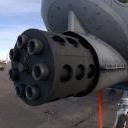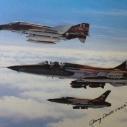All Activity
- Past hour
-

How do you feel about your airframe and mission?
The46IsntThatBad replied to innovator's topic in General Discussion
As a dude that's done both I would choose the 46 every single time. Feel free to DM with specific questions, but to keep it short: KC-135: Simpler, storied, better bases IMO (Mildenhall, Kadena, nice TFIs), you can go do other things outside of the 135 if you want. Obviously with older jets there comes old jet problems. KC-46: Nicer jet, very automated. Ops tempo is very much picking up. Once you go KC-46s you are there for life, so if you're interested in special programs (U-2, 89th, GD, etc) forget about it. Not happening. Current bases are McConnell, Travis, McGuire, Altus, Seymour and Pease, with others on the way. Constant changes going on in the pubs. -
Well the Oct 7th attacks might have been avoided if Netanyahu hadn’t propped Hamas up for years specifically so that he could keep a belligerent bad actor in charge to preclude a two state solution. Conveniently no one has managed to address this argument yet or the sources I posted (up to 4 now) Waiting with bated breath for @Lord Ratner to make it make sense to my stupid childish brain.
-
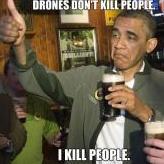
Ramping up against the Houthis in Yemem
GKinnear replied to ClearedHot's topic in General Discussion
...Which could have been avoided if Hamas hadn't decided to deliberately target civilians in Israel, and then hide behind their own civilian population. CIVCAS sucks, but if the Israelis wanted to kill Palestinan civilians, you'd think they'd be much better at it. -
Well thank goodness the estimates were halved. What a relief. Only 4,959 dead women and 7,797 dead children now. And here I was worried something bad was going on.
-
Two!
- Today
-
YRF-4E CCV This particular Phantom II has a significant and diverse history attached to it. The Navy’s F4H-1 was such a success that the Department of Defense requested derivatives for the U.S. Air Force. Designated as the F-110A Spectre, the first Air Force derivatives were actually Navy F4H-1’s in disguise. In March 1962, the DoD announced that the aircraft would become the latest fighter and reconnaissance aircraft for the USAF. On March 30, McDonnell Aircraft received a letter of intent for a single F-110A (serial number 62-12199), and on May 29, McDonnell received a second letter for two YRF-110A reconnaissance aircraft (serial numbers 62-12200 and 62-12201). Prior to delivery, the Air Force changed the designations of the aircraft from F-110 and RF-110 to F-4C and RF-4C, respectively. YRF-4C 62-12200 performed its maiden flight on Aug. 8, 1963 with William “Bill” Ross at the controls. Though it had the modified nose for the RF-4C, it carried a limited amount of photographic equipment and served primarily as the aerodynamic testbed. Upon completion of the reconnaissance test program in June 1965, 12200 went back to St. Louis for modifications to remove the photographic equipment and install an M61A1 Gatling Gun, which protruded through the forward-looking reconnaissance window. At this point McDonnell referred to the aircraft as an “F-4-TFS” for Tactical Fighter Support. Upgrades continued on the YRF-4C when the aircraft received new General Electric J79-GE-J1B engines (prototypes of the -10 and -17 series) in February 1966. YRF-4C 12200 received more modifications to become the aerodynamic prototype for the F-4E program, with the official designation change from YRF-4C to YF-4E on April 20, 1967. Beginning in 1968, the YF-4E tested a rudder made of Beryllium rather than the standard metal version. Engineers at the Air Force Flight Dynamics Laboratory (AFFDL) proposed the use of Beryllium as an added weight savings since a Beryllium rudder weighed 34.6 percent less than aluminum. YF-4E 62-12200 conducted its first flight with the new rudder on May 14, 1968 and performed 158 test flights over the next 39 months. While testing the new rudder, the Air Force modified the aircraft to test fixed leading edge maneuvering slats under Project Agile Eagle IV and also tested slotted horizontal stabilators prior to being fitted to the F-4E fleet. The fixed wing leading edge slats were removed at the end of the test program. In 1972, the Air Force and McDonnell Douglas (McDonnell Aircraft and Douglas Aircraft merged to become McDonnell Douglas in 1967) chose YF-4E 62-12200 as the flight test vehicle for the Survivable Flight Control System (SFCS) program. As described in report AFFDL-TR-73-105: Survivable Flight Control System Final Report, “The Survivable Flight Control System (SFCS) is a three-axis fly-by-wire (FBW) primary flight control system using secondary actuators to provide position commands to the surface actuators. In the fly-by-wire system, electrical sensors measure pilot commands, in the form of stick and pedal movements, and the aircraft flight path responses in pitch, roll, and yaw. Computers process the sum of the sensor inputs and act to provide electrical signals which move the primary control surfaces, such as ailerons, to produce the desired aircraft motion. In the event of a total computational failure or sensor malfunction, a direct electrical path, called the electrical back-up mode, is provided to allow the pilot to get home and land. The final configuration of the SFCS provides true fly-by-wire control of all primary flight control surfaces, with no mechanical control system in any axis.” SFCS Phase I was conducted in the laboratory using ground simulations, actual flight test was conducted during Phase II. The Phase II flight test program was divided into three sub-phases: Phase IIA- Development and evaluation of the SFCS utilizing a quadruple-redundant, three-axis analog FBW flight control with an interim mechanical backup control system. Phase IIB- Evaluation of the SFCS using the three-axis analog FBW control system with no mechanical backup. Phase IID- Air Force evaluation and demonstration flights. The YF-4E conducted the first Phase IIA flight from the McDonnell Douglas facility in St. Louis, Missouri on April 29, 1972 to become the first fighter aircraft to fly with an analog fly-by-wire control system (not to be confused with NASA’s modified F-8C which made the first Digital fly-by-wire flight on May 25, 1972). Ferried to Edwards AFB, California, soon after the first flight, the majority of testing centered around developing confidence in the system reliability of the analog fly-by-wire control system. After the 27th flight on Sept. 8, 1972, the aircraft was temporarily grounded at Edwards while the mechanical back-up system was removed. Phase IIB began early the following year, with the YF-4E making the first flight with an analog fly-by-wire control system and no mechanical back-up on Jan. 22, 1973 at Edwards AFB. The aircraft made a total of 19 flights for 18.3 flight hours during Phase IIB testing, with the final Phase IIB flight occurring on May 7, 1973, though some Phase IID flights occurred concurrently with Phase IIB testing. The YF-4E also became the first fly-by-wire aircraft to fly at Mach 2 during this series of testing. Dividing Air Force Phase IID testing into two separate categories, Evaluation and Demonstration, the Evaluation portion began on March 21, 1973 and finished on May 8, 1973 after a total of 21 flights. Phase IID demonstration flights commenced on April 25, 1973, and finished on May 31, 1973. Thirteen pilots from the Air Force, Marines, and NASA participated in the 21-flight program. All participants received back seat flights except for three demonstration pilots that received two flights each from the front seat. Two addition flights were required to ferry the aircraft back to St. Louis. Once again, the YF-4E was chosen to participate in a new Control Configured Vehicle (CCV) test program under the USAF/McDonnell Douglas sponsored Precision Aircraft Control Technology (PACT) program. During this program, the aircraft received canards mounted on the shoulder of each intake. As designed, the canards had a surface area of 40 square feet, yet the outer panels were removable permitting flight testing with partial span canards have a surface area of 17 square feet. Each canard was driven by a production F-15 stabilator actuator with structural clearance providing canard movement of +20 degrees (canard leading edge up) and -30 degrees (canard leading edge down) but electronics limited the movement to +/-10 degrees. While undergoing CCV modifications, a set of fixed wing leading edge slats became available and were installed at this time. The initial shakedown flights took place in St. Louis without the canards installed beginning on June 12, 1974. With these flights completed, the YF-4E was ferried to Edwards AFB on June 20 for continued testing. Once at Edwards, engineers installed the canards and flight testing continued. The modified aircraft took to the skies for the first time in its canard-equipped configuration on July 5, 1974, with McDonnell Douglas pilot Bill Brinks at the controls. Over the course of the 30-flight test program the aircraft performed 22 flights with full span canards and wing leading edge slats, two flights with full-span canards and no wing slats and a single flight with partial-span canards and wing leading edge slats. At the completion of the PACT/CCV program, the YF-4E was ferried back to St. Louis for disposition on Aug. 23, 1974, and never flew again. For these flights, the YF-4E retained the canards and leading edge slats, and also carried along a fuel tank on each wing, as well as a cargo pod on the centerline station. After years in storage, AFFDL project engineer, James Morris, heard from friends at McDonnell Douglas that the airframe would be scrapped. Morris was able to convince the United States Air Force Museum in Dayton, Ohio to accept the aircraft as a donation. The museum accepted the aircraft on Dec. 5, 1978, now he just had to get it there. Morris placed a call to the 272nd Transportation Company, Fort Sill, Oklahoma, and explained his problem. The Commanding officer decided that transporting the aircraft to Dayton would be a great training exercise, and he sent a CH-54B Skycrane heavy-lift helicopter with a helicopter escort to St. Louis to retrieve the Phantom II. On Jan. 9, 1979, the Skycrane and its cargo departed St. Louis and safely delivered the aircraft to the NMUSAF. While fly-by-wire control systems are commonplace in today’s aircraft, few people understand the difficulty to achieve this goal. The YF-4E serves as a visual reminder of the challenge of building a Fly-By-Wire system. https://www.tinker.af.mil/News/Article-Display/Article/3871219/flashback-nine-lives-of-a-phantom-ii/
-
FreqFlyer joined the community
-
I never thought she was hot, but whatever she was, she's certainly not less of it because of Donald Trump. Here we go again, Donald Trump sabotages his own success because he's another Boomer addicted to social media. Oh well.
-
His and hers Sent from my iPhone using Tapatalk
-
Drop out of deep left field, somebody on EWO track dropped E-7 Wedgetail, airframes are always changing it seems!
-
Biff, could we get your opinion?
-
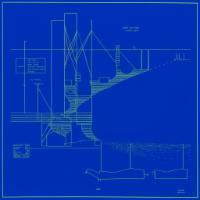
Standing Out From the UPT Applicant Crowd
blueingreen replied to blueingreen's topic in What Are My Chances?
Thanks for your comment bro, and best of luck with your own pilot journey. How's life in Hawaii? Rushing squadrons seems to have become a more exclusive process. Many squadrons now state that they can't accommodate rushing / visits unless it's during a hiring board. When the hiring board comes around and the applications are in, you either make the cut and are invited to rush, or you're not. I'm sure you can circumvent this policy if you have some connections to the squadron, which is why I'm doing my best to network. I was invited to a rush event with the 144th FW last summer, but unfortunately they canceled their UPT board. I'm hoping the positive interactions I had during that rush event will help me stand out during their next UPT board! -
with T-6 direct FTU now for heavies their track select is integrated into their drop night I imagine the -38 folks will get another drop night for their actual airframes
- Yesterday
-
damn...no fighters?!
-
Does anyone here have any contacts at the Reserve 78th or the 91st attack squadron’s out at Creech? It would be a good fit for me for location, but that’s about all I know about them. Any help is appreciated.
-
UN Halves Its Estimate of Women and Children Killed in Gaza It's also difficult to reduce casualties when Hamas completely subverts your tactics and uses them against you (example: Hamas’ use of human shields in Gaza, Hamas Manual Calls for Hiding Bombs in Civilian Homes) Is the IDF guilt free? Of course not. But I feel, just like we did during GWOT, they are trying to minimize civilian casualties to the max extent possible while their enemy wants to maximize damage to everyone, including their own people: "(Hamas)...justify the deaths of Palestinian civilians as a “necessary sacrifice” according to the messages".
-
Vance 25-10 T-38 x5 T-6 FAIP x1 RC-135 x1 C-17 x4 KC-135 x1 Guard KC-135 x1 Reserve KC-135 x1 C-130J x3 Guard C-130J x2 C-146 x1 KC-46 x1 MC-130J x2
-
Oh yea, they already built the new VC-25B hangars at Andrews...they only built 2.
-
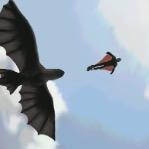
Standing Out From the UPT Applicant Crowd
wikz replied to blueingreen's topic in What Are My Chances?
I first off wanna say that I am not a pilot and in the process like you. I can't speak on the specific questions you asked since ive never been on the board, but FWIW dont be too intimidated by people with a lot of hours. For example, we have a fighter guy who was hired with no flying hours but he had family connections in the fighter squadron. YMMV, but for the Hawaiian raptors, seeing if you mesh with the bros is definitely a piece of the pie as to whether you get hired or not. Is their a reason you've only rushed once? Hoping this reply will revive this thread so someone who's an actual pilot can help you. 🙂 -

The PT belt, An in-depth analysis and dissertation
disgruntledemployee replied to HeyEng's topic in Squadron Bar
Jungle said it better 14 years ago. -

Ramping up against the Houthis in Yemem
Lord Ratner replied to ClearedHot's topic in General Discussion
1. Nothing was dismissed. A source was laughed at. Hell I'm still laughing at it. I even addressed the point about Netanyahu. Think, McFly. 2. I am able, simple unwilling. See below. I don't feel the need to explain why slavery is bad either. Grownups should know why already. 3. The history is fine. The slogan "killing civilians is bad" is, as I said, childish, ignorant, and meaningless. You can have a stupid opinion without being stupid. I will say, however, that at this point I am starting to think he's stupid as well. You, however, just seem like another nsplayer. I guess there must always be one. 4. Specifically the insanity of a military member simplifying collateral damage to "bad." I expect that of a 21 year old English major. Not an officer. 5. Toughen up. There are stupid ideas. Also, Step 6? "Killing Civilians is Bad" is naive specifically because of the ethical complexity. If you have a point to make for once, by all means, let's hear it. But if you're going to make a stupid point that everyone within the community should already be completely familiar with, such as the aforementioned point on civilian death, don't expect a ton of effort dispelling it. -
Kill switches in solar panels from China? https://www.dailymail.co.uk/sciencetech/article-14718749/China-secretly-installed-kill-switches-solar-panels-sold-West-Beijing-plunge-enemies-darkness-event-WW3.html
-
A Field Guide to Rhetorical Deflection by @Lord Ratner Step 1. Dismiss evidence that contradicts your biases without addressing its substance. Step 2. Label ethical concerns as "childish" when unable to refute them on merit. Step 3. Resort to personal attacks rather than engaging with documented historical context. Step 4. Invoke military experience to shield weak arguments from scrutiny. Step 5. Use condescension as a substitute for substantive counterpoints. Step 6. Characterize principled consistency ("killing civilians is bad") as naive rather than acknowledging ethical complexity.
-

Ramping up against the Houthis in Yemem
Lord Ratner replied to ClearedHot's topic in General Discussion
You're right, incoherent was not the right word to use. Childish, ignorant, meaningless... Those would have been better descriptors. It is fascinating to see someone in the military make such a vapid comment, considering their profession has and always will understand the (bad) necessity of killing civilians. In fact, it is precisely the banality associated with your statement that has led to Hamas hiding behind civilians as their primary strategy. The Useful Fools are multiplying. I expect it from a college campus, not from supposed educated service members. Oh well. -
OMG…I meant Pretty! I guess I was drunk last night!







